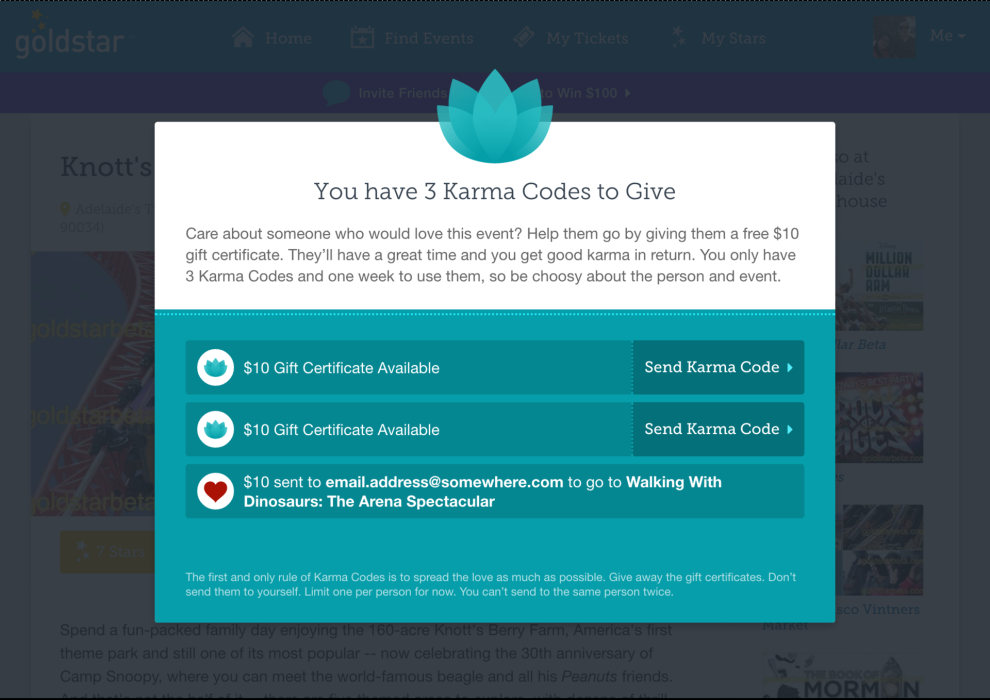Goldstar’s referral program hit a wall. The event-oriented daily deal site had experimented with a wide range of incentive credits over the years, but referral numbers remained flat. Goldstar discovered that adoption rates actually declined when incentives reached a high level, which led to cutting referral credit to a token $1. That small amount proved just as effective as slightly higher figures, but the overall impact was still muted. “We kept trying to maximize a straightforward refer-a-friend program that was past its prime,” says Jim McCarthy, Goldstar CEO.
Then realization struck. Goldstar was using outdated assumptions to guide its referral strategy. In the early days of the Web, general awareness was the order of the day. Today, social media and mobile connectivity empower people to share very specific information with a carefully targeted audience. Goldstar needed a modern approach that emphasized specificity and invited action, rather than simply asking one person to tell another about the existence of the site.
Enter the Karma Code. Instead of prompting a general awareness email, members can now send a $10 promotional code to a friend for a specific event sold through Goldstar. “Now, you’re talking to a specific person for a specific reason, which is a much more interesting conversation than, ‘I’m into Goldstar and thought you might be as well,’” McCarthy says.
Even in rollout mode, when Karma Codes were only enabled for half the Goldstar audience, the impact was substantial. The new program boosted new referrals by 80%. That figure is due to climb now that Karma Codes are available to all Goldstar members.
More significantly, Karma Codes are attracting more valuable new members to the site. Revenue from incoming Karma Code customers is nearly twice as high as revenue from members obtained through the most recent referral program, and nearly four times higher compared to customers acquired through all sources. “We believe we’re creating a customer that’s more warmly introduced to what Goldstar is all about,” McCarthy says. “In terms of measuring lifetime value, we’re still in the early days, but we know that people who buy early in the relationship believe that future investment is more worthwhile.”
Karma Codes are also helping Goldstar refine its demographic targeting. Goldstar’s audience is currently split 50/50 between married and unmarried people, but in this new program 65% of senders and 62% of receivers are single. Single women account for almost half of the entire volume of sent codes, and 40% of recipients. The high volume of single and child-free (80%) recipients creates a new audience that has the means and the time to hit the town for future events.
Today, Goldstar members have just three Karma Codes to give away, whether or not they’re actually redeemed. The company is still experimenting with whether and how to refresh an existing member’s stock. Seeing how enthusiastically the member base adopted the altruistic referral program, the system is likely to live on in one form or another. “Everybody wants to bring something valuable to their friends, but few people want to sell their friends for money,” McCarthy says. “Karma Codes rely on that philosophy: giving a friend a significant benefit on something they care about, rather than giving a small benefit to yourself.”





